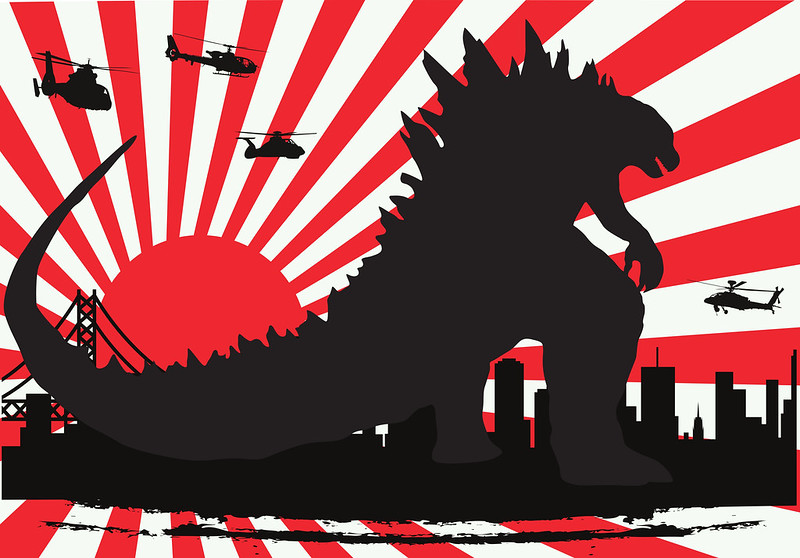
Japanese Cinema: Gojira
This 1954 film by director Ishiro Honda is widely understood as an allegory for the devastation wrought on Japan by the atomic bomb. This is not Godzilla, the later remake starring Raymond Burr, but the original black-and-white version in Japanese. It is a stunning film, even with its hokey visual effects.
First, for a well-rounded foundation, here’s what rovi.com has to say—
As his visual metaphor, Honda uses a 400-foot-tall mutant dinosaur called Gojira, awakened from the depths of the sea as a rampaging nuclear nightmare, complete with glowing dorsal fins and fiery, radioactive breath. Crushing ships, villages, and buildings in his wake, Gojira marches toward Tokyo, bringing all of the country’s worst nightmares back until an evil more terrible bomb — capable of sucking all the oxygen from the sea — returns the monster to its watery grave. The original film is chilling, despite some rather unconvincing man-in-a-suit special effects, and brimming with explicitly stated anti-American sentiment.
I must say I didn’t notice any anti-American sentiment. I did notice the following:
- An early SOS message in the movie (dot-dot-dot, dash-dash-dash, etc.) was much more realistic—up to speed? not overplayed?—than I’ve seen it in American movies.
- The monster itself isn’t shown for quite a while. We’re led up to that by the very convincingly horrified expressions on the faces of the people who see the monster. Before we even get a look at the creature we’re immersed in everyone’s fear.
- The monster’s fiery breath—okay, radioactive—was truly scary.
- There is both a “mad scientist” and an older “voice-of-reason” scientist in the story. The latter guy, strangely, doesn’t want to destroy the monster who is wreaking havoc everywhere. He wants to study it and learn from it.
- After so much horror and destruction, the ending is strangely, gently elegiac. There is an inexplicable sorrow.
- I walked away from the movie with a sense of the interplay among risk, desperation, desecration, and inevitability.
Unresolved—
What exactly was an example of anti-American sentiment?
At the end, the voice-of-reason scientist hopes for more Gojiras. Why is that a realistic hope?
Anyone who has thoughts on those questions, please share them!
